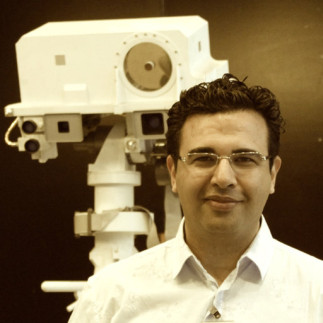Abstract. Water on Mars, on Jupiter’s Icy Moons, on Asteroids, and perhaps even more water on more bodies of our solar system — Are water and life unique to Earth? The last decade of planetary exploration suggests that the liquid water, uniquely characterizing our blue planet, is potentially a transitional phase that other bodies of our solar system may have gone through or will be transiting to during their evolution. On Earth, as well as other bodies of the solar system, evidence of water and climatic evolutions are often found in the first few kilometers of the subsurface. Today, planetary sounding and imaging techniques have provided new insights into understanding the unseen evolution history of the Earth, Moon, Venus, Mercury, comets, and Mars—as well as numerous other bodies in our solar system hunting traces of water and ice and exploring new habitable environments. The returned data reveals the similarities and discrepancies between our planets and the other bodies of the solar system. In this lecture dedicated to the general audience, Dr. Heggy will speak about how sounding methods are being used to explore evidence of possible deep subsurface aquifers and ice deposits on Mars, asteroids, and comets and how these methods are being used to understand the evolution of groundwater recourses in North Africa and the Arabian Peninsula and their responses to climatic and anthropogenic stresses. The lecture will also discuss the uncertainty and the evolution of water shortage in the Middle East and its implications on the area's stability for the upcoming few decades.
Bio. Dr. Essam Heggy is a Planetary Scientist at the Viterbi School of Engineering in the University of Southern California and a ROSETTA Co-Investigator at the NASA Jet Propulsion Laboratory. Heggy’s research interests in space and planetary geophysics aim to understand water and ice distributions in Earth's arid regions, Mars, the Moon, icy satellites, and near-Earth objects. He works in various space exploration projects, including the Mars Express Orbiter, the Chandrayaan-1, the Lunar Reconnaissance Orbiter, and the Rosetta mission. He is also a contributing scientist to several NASA & ESA proposed planetary and terrestrial radar imaging and soundings experiments. He is also an Associate Professor at the Institut de Physique du Globe de Paris in France and served in several advisory roles for international agencies supporting educational and scientific reforms in the MENA area.

